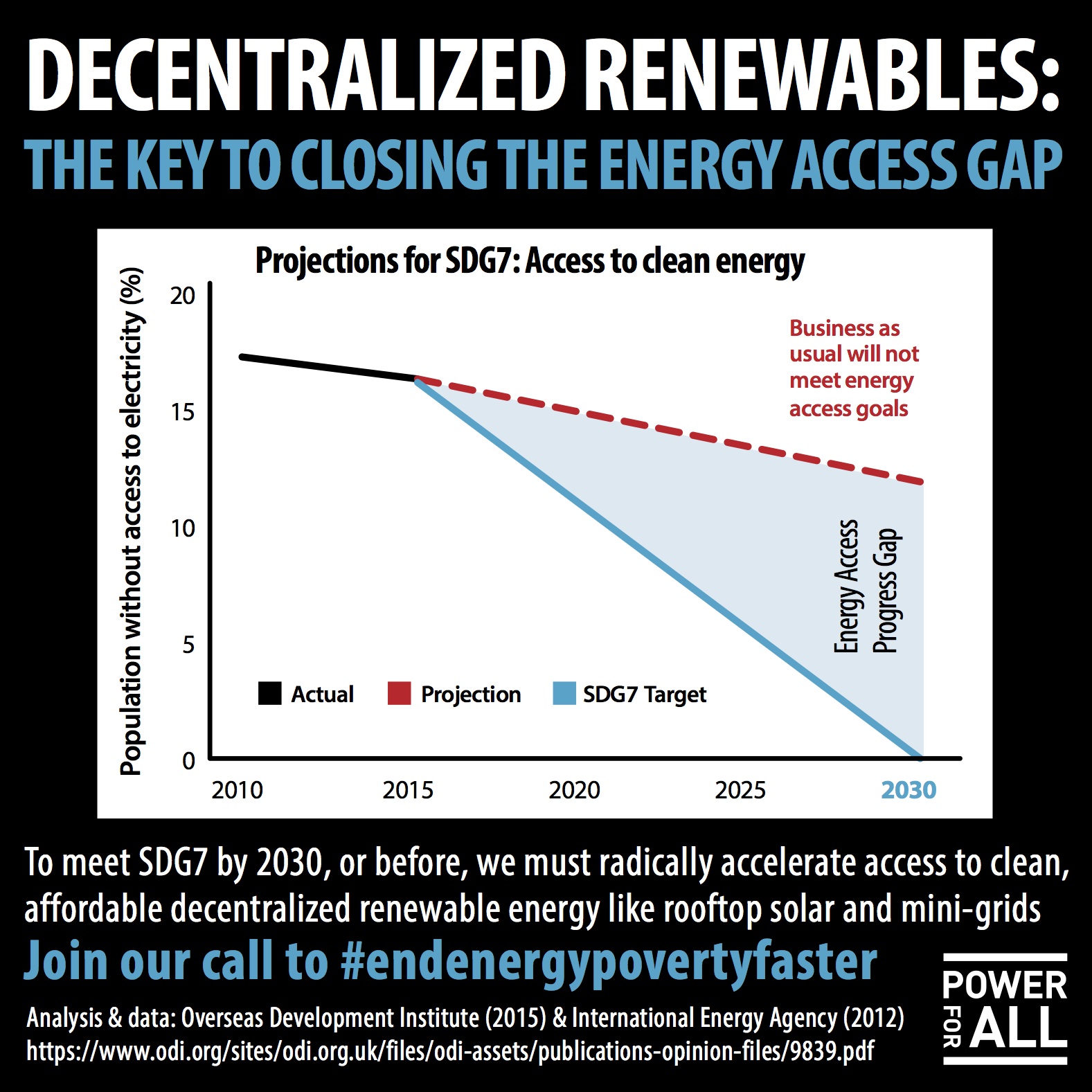 Power for All report recommendations include licensing procedures for microgrid operators, distributed renewable energy focus
Power for All report recommendations include licensing procedures for microgrid operators, distributed renewable energy focus
A report released this week by Power for All identifies the five most critical national energy policies required to end rural energy poverty for 1 billion people living in Sub-Saharan Africa and South Asia. The report, titled “Decentralized Renewables: From Promise to Progress,” outlines steps governments can take to implement those policies, particularly the integration of distributed renewable energy (DRE) solutions into energy infrastructure planning and build-out.
The report centers on new analysis from the Platform for Energy Access Knowledge (PEAK)—a joint project between the Renewable and Appropriate Energy Laboratory (RAEL), University of California, Berkeley, and the Power for All campaign. PEAK examined the policies of five high-growth DRE markets—India, Bangladesh, Kenya, Tanzania, and Ethiopia—to identify trends in energy policy that can help other countries replicate success.
In order to measure progress, the report indexes the 48 energy-poorest countries and their national energy access targets to determine which are best prepared to achieve universal electrification and which are not. The 48 countries together account for 540 million rural energy-poor people, more than half of the global total. Unfortunately, almost two-thirds of these countries currently lack a rural energy access target.
5 critical policies to end rural energy poverty
A 2016 report by Power for All concluded that ending energy poverty by 2030—the focus of UN Sustainable Development Goal (SDG) 7—can only be achieved for these populations by accelerating investment in DRE solutions, including microgrids and rooftop solar. The new report builds on those findings, focusing on the need for policy leadership alongside increased access to finance. The analysis of the high-growth markets has identified key policy levers that have been successful. Those five policies are:
- Reducing import duties and tariffs on DRE related products
- Supporting the availability of local finance through loans and grants and microfinance
- Establishing energy access targets or national commitments to electrification
- Establishing rural electrification plans or programs that incorporate DRE
- Technical regulation through established licensing procedures for microgrid operators and adoption of quality standards for products and services
3 key policy implementation recommendations
In addition to identifying what policies are behind rapid rural energy access, the new report also makes three key recommendations on policy implementation and process, including:
- Setting the target: include decentralized renewables in national policies and rural electrification plans
- Ending the implementation gap: institute decentralized energy in integrated energy planning so that grid extension, microgrids, and standalone systems are given equal consideration
- Instituting collaborative policy design: DRE multi-stakeholder-led policy-making that includes government, private sector, funding, and civil society actors
“Decentralized renewable energy is the key to unlocking SDG 7,” explains Rebekah Shirley, Power for All research director and co-author of the new report. “This report not only identifies the policies necessary to jumpstart that process but for the first time outlines specific actions that help national governments successfully implement these policies. Energy access is possible, but only with political will and leadership at the national level.”
To turn its call to action into tangible results, Power for All recently hosted multi-stakeholder meetings in Sierra Leone, Nigeria and Zimbabwe, where governments, civil society, and the private sector responded with clear commitments to accelerate energy access via DRE. For example, Mohammed Wasaram, managing director of Nigeria’s Rural Electrification Agency (REA) pledged that his organization would “continue to uphold its mandate to ensure the facilitation of entry of new market participants and continued development of local rural electrification ventures.”
